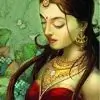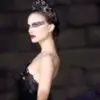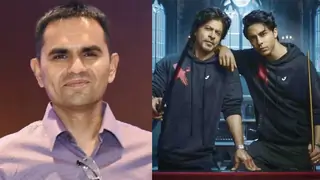Hi everyone,
Since it was a beautiful episode and had so many wedding rituals being followed so just thought of posting some details about a Rajput/Hindu wedding.Though customs rituals do differ from home to home..But just giving a general idea about the basic structure of the Wedding.
Regards
Piu
(Note - No offense to any custom but this is merely a compilation of rituals of a Hindu wedding and General Rajput weddings available on the internet)
Wedding customs
RajputsA member of the Hindu warrior (Kshatriya) class we are known for our valour and enjoy a reputation as formidable soldiers. Many of us serve in the Indian army as during the British raj, the government recruited us in large numbers.
Today, the Rajputs are found spread across the subcontinent, particularly in north and central India. We are indigenous to India and are not descendants of Aryan invaders, Huns or Scythians. The Rajput is martial in spirit, fiercely proud, loyal and independent, and emphasises lineage and tradition. Our patriotism is legendary and we have always preferred to choose death over dishonour.
Rajput marriages as a rule are grand traditional affairs. The weddings extend for days and boasts of many rich events.
The rituals before marriage
Tilak ceremony
In this ceremony, which makes the engagement or alliance official, the male members of the girl's family visit the boy's house. The girl's brother then applies the tilak on the groom's forehead. The boy is also presented with gifts such as a sword, clothes, sweets, fruits etc.
Ganapati Sthapana and Griha Shanti ceremony
This ritual held a few days before the marriage is auspicious and is done to propitiate the gods. In this ceremony a havan is performed and a Ganesha idol is installed.
Pithi Dastoor
This ceremony which involves application of turmeric and sandalwood paste on the bride and groom is held with much fanfare in both wedding houses. This function is held in a big way in the bride's house especially and features women singers with dholak as well. They sing wedding songs along with shehnai and nagara players.
Mahira Dastoor
This ritual which takes place in the boy's and girl's houses involves the maternal uncles of the families. The uncles donate clothes, jewellery and sweet delicacies to the entire family. It is a symbolic gesture emphasising the fact that the maternal uncle has to lend a hand of help for the expenditure of his sister's family.
Janev ceremony
The groom is made to wear a saffron robe and perform a yagna with the priest on the eve of him taking over the duties of a householder. At the end of the yagna, the groom has to act as if he wants to become an ascetic and run away but is stopped by his maternal uncle, who convinces him to get married.
Palla dastoor
The boy's family visits the bride's house with the trousseau like clothes and jewellery a day or two before the marriage.
Rajput Baraat
The Rajput baraat is an all men's affair consisting of the men from the groom's family. The groom is usually dressed in gold achkan and an orange turban and usually rides an elephant or a horse and carries a sword.
Welcoming Ceremony
At the entrance to the hall, the groom will be received by the brides mother who will perform a short welcoming ceremony called PONKKHANA. Through this ritual and by her gestures, she tests the groom before she makes KANYADAN or gives way her daughter."Are you sure you want to get married?" She holds up five small instruments each with its symbolic message for the groom. The instruments comprise: I. A whisk (RAVAI). "Only hard work will makes butter from curd. You will only achieve the fruits of your marriage if you are prepared to work at it!"
ii. A pestle (SAMBELLI). "Marriage can be unclear - reality and truth in marriage will only be achieved by separating vanity from the person. Only by separating the husk with hard work with a pestle will one see pure rice".
iii. A needle (TRANK) "To weave fine thread from wool you need a sharp needle. It is this very needle that will break the thread if you are not careful - take care; good marriage is always on a fine balance".
iv. A yoke (THOSERI) "With a yoke, two oxen can plough the field efficiently side by side. Let this be a reminder that in marriage, and through life you must both work together side by side with equality - as do our gods Rama and Sita, Radha and Krishna".
v. An arrow (TIR) "This is the arrow which protects my daughter. IT will look after you both but if you cause harm, it will be your enemy".
With each gesture the groom will smile his reply. He is confident in his wishes and wants to get married. A final test awaits the groom; a small clay pot (SAPATIA) is placed underneath his feet and he has to crush it as acceptance of the contract with his mother-in-law. The aim is to test his strength, is he man enough! As the brides mother welcomes the groom and his family to the wedding, the priest will offer a prayer to Ganesh for safe delivery, to the universe and stars to grace the ceremony (our lives are said to be governed by the stars), to the Goddess Kuldevi of the family to preside (a Hindu wedding is also a union of two families), and to welcome the spirits of the deceased members of the family. The brides mother will now escort the groom to the Mandap, with his best man at his side. The grooms sister, will shake a metal pot containing some lentils (MAG) and coins (1.25) on his back as he walks along. The pot is covered with a green cloth signifying good luck and prosperity. The sound of the pot scares off evil spirits and keeps the groom awake and alert so that he listens carefully to the holy verses and performs the ceremony with full consciousness. This is a tradition form the olden days when the wedding often took place at midnight and the couple tended to be very young and thus prone to falling asleep. Throughout the ceremony the grooms sister will shake the port and press it on the couples backs in turn.
The brides arrival
As the groom awaits the entrance of his bride, a shawl will be drawn in front of him. The shawl will prevent the couple casting eyes at each other before the matrimony, as tradition dictates. The priest will then call upon the bride chanting Manglastak. After having waited for long enough, the bride will then gracefully walk to the Mandap escorted by her maternal uncle (MAMA) and relatives.
Exchanging garlands
The couple's first meeting is symbolized by the exchange of colorful garlands of fresh flowers that sybolise beauty, colour and happiness. The bride will offer the first garland. By doing so she declares she has chosen the groom at free will. The groom will return the compliment by offering a garland in return as a welcome to a new life and with a promise to look after her. The groom's feet will then be washed by the bride's parents. Traditionally, this was a way of refreshing the groom who often has to travel long distances to the wedding on bare feet. the couple once in the canopy, are also given the respect befitting the spirits of Lord Mahavishnu and Laxmi as the union of these two spirits is seen as the most perfect of Hindu marriages. Washing feet with milk and honey is a sign of respect.
Beginning the marriage union
The bride's parents will place a "Varmala" around the groom which represents 18 puranas (Holy Books), the 6 Sastra (Holy Scriptures) and the 4 Vedas of Hinduism. The Varmala will then be placed around the bride as well to begin the union with Holy Blessings. A while cloth will be placed around the groom with the other end tied to the bride's saree (Chundadi) with a Holy knot known as Chedabandhan.
Kanyadan and Hastamelap/Pani garhan
The bride's parents will offer their daughter's hand to the groom and request him to accept their daughter as his wife and as an equal partner in marriage - KANYADAN. As the groom accepts their hands are joined together for the union of their souls - HASTAMELAP. Two women from each of the couple's families will now bless the bride and groom.
Mangal Fera - affirming the union
The most important ceremony of the day then takes place and is called MANGAL FERA. The couple will walk around a sacred fire to affirm their marriage. Offerings of Ghee, Sesame seeds and Barley are poured into the fire and there is chanting of MATRAS (RASTRABRAT OM, JAYA OM AND ABYATA OM to the stars and planets, the moon, the sun and to Vishnu their preserver) and prayers by the bride to Yama, the god of death so that he may grant a long life to the groom.
The first round (FERA) of the fire is for religion of Dharma (meaning the development of basic human principles in their everyday life). This is initiated by the bride's brother, symbolizing his consent for the marriage.
The second FERA is for the understanding the meaning of religious life of Eartha (attending to your everyday professions under the umbrella of Dharma).
The third FERA is to ensure the Karma (procreation) and to promise that they will teach their children the principles and values of Hindu Dharma.
The fourth FERA is for Moksha to promise that when they fulfilled their life with material needs, they will live lives of a hermit and free themselves of worldly goods for the after life. During this FERA, the groom will lead the bride. The couple will then place their right foot on the stone "SHILAROHANAS" and so will attempt to be as firm as stone so that they can face the onslaught of enemies and difficulties together.
Note normally 4 PHERAS ARE ENOUGH ACC TO THE VEDAS HOWEVER Seven pheras occur before Saptapadi.
SEVEN PHERAS
. In the first round or phera, the couple prays to God for plenty of nourishing and pure food. They pray to God to let them walk together so that they will get food.
2. In the second round, the couple prays to God for a healthy and prosperous life. They ask for the physical, spiritual and mental health from God.
3. In the third Phera the couple prays to God for wealth. They ask God for the strength for both of them so that they can share the happiness and pain together. Also, they pray so that they can walk together to get wealth.
4. In the fourth round the couple prays to God for the increase in love and respect for each other and their respective families.
5. The bride and groom together pray for the beautiful, heroic and noble children from God in the fifth step.
6. In the sixth holy round around the fire, the couple asks for the peaceful long life with each other.
7. In the final seventh round the couple prays to god for companionship, togetherness, loyalty and understanding between themselves. They ask God to make them friends and give the maturity to carry out the friendship for lifetime. The husband says to his new wife that now they have become friends after the Seven Vows/Sat Phere and they will not break their friendship in life.
- Alt
The vows taken in each phera are as below:
- With the first phera, the couple invokes the gods for the plenitude of pure and nourishing food and a life that is noble and respectful.
- With the second phera the couple prays for physical and mental strength and to lead a healthy and peaceful life.
- The third phera is taken for the fulfilment of spiritual obligations. The gods are invoked for blessing the couple with spiritual strength.
- The fourth phera is taken for the attainment of happiness and harmony through mutual love and trust and a long joyous life together.
- The fifth phera is taken to pray for the welfare of all living entities in the entire universe and for begetting noble children.
- The sixth phera is for bountiful seasons all over the world. The couple prays for bountiful seasons and seeks that they may go through these seasons together, just as they would share their joys and sorrows.
- With the last phera they pray for a life of understanding, loyalty, unity and companionship not only for themselves but also for the peace of the universe.
Having exchanged these vows of love, duty, respect, fidelity and a fruitful union the couple agree to be companions forever. The process of saat phere acquires more significance in that the couple prays for the peace and well-being of the entire universe.
An Indian marriage is a symbol of purity, union of two different people, community and culture. All the Hindu marriages carry out similar rituals with slight difference.
Taking the seven marriage vows-SAPTAPADI
Finally the marriage will be declared, with the couple taking seven vows (SAPTAPADI) and prayers to Vishnu and Laxmi: 1. They will ask for god to bless the house that they will live in.
2. The groom will pray for good health whilst the bride will vow to treat her new family as her own.
3. The groom will pray for wealth and prosperity whilst the bride will pray for love and understanding and (with occasional help) look after the household
4. Both will ask Vishnu to look after their children and grandchildren.
5. The groom will ask Vishnu to bless his farming animals so that together they will achieve a ripe harvest. Relating to modern times, the groom will probably ask to bless his boss so that he will get a good payrise. The bride will promise to be beside her husband through good and bad times.
6. The groom will pray for good seasons for his land and the bride will pray for their friends and relatives. 7. The both will pray for happiness. The groom will accept the bride as his wife by placing Red Kumkum on her forehead "SAUBHAGYA CHINHA" and the couple will break their fast by accepting "KANSAR" (Indian sweets) given by the bride's mother. The bride and grooms mother's will now approach the bride and tell her that she will forever enjoy the status of being a married woman "AKHAND-SAYBHAGYA-VATI-BHAVA".
After the marriage rituals
Grihapravesh
In this ritual the bride enters the husband's house for the first time. The bride is welcomed with a puja, and some fun games she has to indulge in with the groom.
Pagelagni
The day following the grihapravesh, this ceremony in which the bride who is still in a veil is introduced to all the family members of the groom. They in turn bless her and give her gifts.
Bidai or farewell
The event of a bride leaving her parental home is marked by the bidai ceremony. A coconut is placed under the doli and the moving doli has to break the coconut before proceeding further. The bride opens her veil before she rides in the doli and her husband gifts her a piece of jewellery for revealing her face to him.
NOTE--
There was a scene where Bharmal and Mainavati turn their faces away during sindoor daan.
I will give you the significance of the turning away of of parents in a hindu wedding ritual...
Sindoor daan is considered as the ultimate ritual which bind the husband wife together..So after Pani grahan ie Kanya daan and Saptapadi when the groom offers sindoor the parents turn away their head or do not follow the main ritual as they say that its a too emotional a moment and thus apni hi nazar lag jati hai..this turning way is apart of the wedding ritual ..Later when the sindoor daan is finished..The groom covers the head with a cloth so that he declares to the world that she belongs to him now..
The parents only turn up afterwards -- the post wedding rituals have two phases..
1. While the bride and groom are sitting at the altar ,the parents touch their feet coz at that time they are considered to be the Roop of Ram and Sita ... Vishnu and Lakshmi or Shiva and SHAKTI..
Later when they leave the alter ,the bride groom seek the blessings..
So this turning their heads away is a part of the wedding ritual(Hindu)




































